Interview: Margaret Grenier of RAVEN MOTHER at Fleck Dance Theatre
RAVEN MOTHER Opens November 29 at Harbourfront's Fleck Dance Theatre.
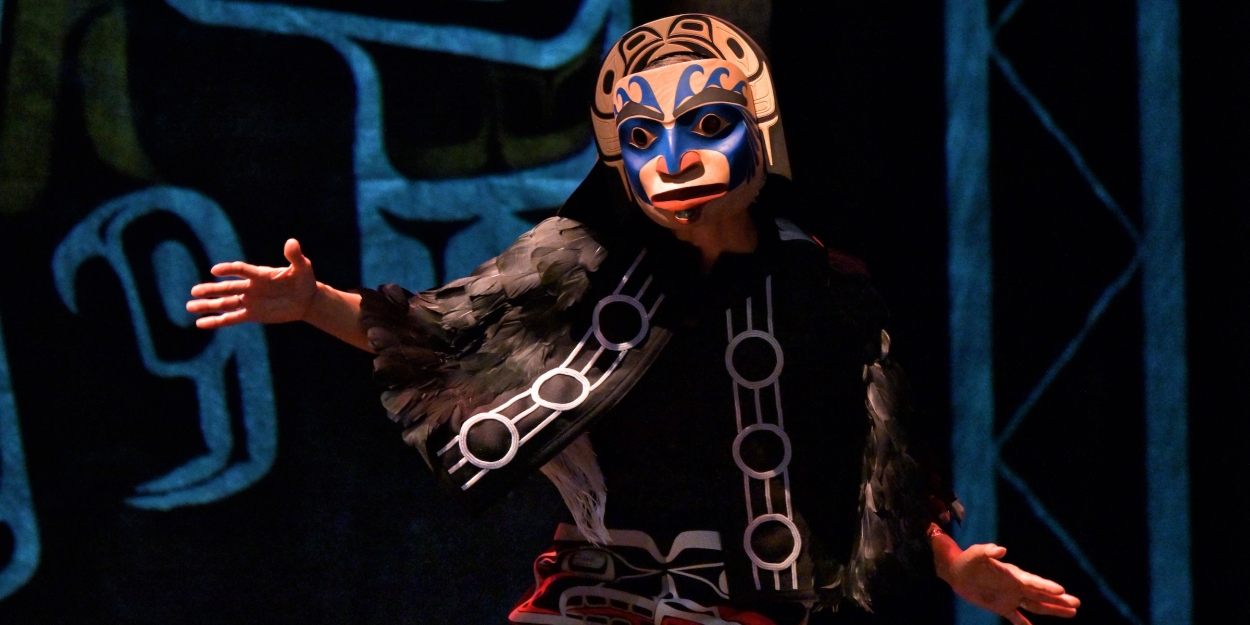

On November 29, Harbourfront's Fleck Dance Theatre will welcome two performances of RAVEN MOTHER, the Toronto premiere of a full-length multimedia work by Dancers of Damelahamid that illustrates the impact of the group's co-founder, Cree Elder Margaret Harris, on the renewal of Indigenous dance along the Northwest Coast in the face of the Canadian government's Potlach Ban.
The show celebrates Indigenous women and their role in keeping and passing down cultural knowledge, and the transformational symbolism of the raven crest. Featuring generations of Harris' family as creators and performers, the production employs a handcrafted raven cloak and raven transformation mask, as well as original compositions and projections, to celebrate the Gitxsan people.
BroadwayWorld spoke to Margaret Grenier, Harris' daughter and Executive and Artistic director for Dancers of Damelahamid, about the work's roots in the past, importance in the present, and resonance for the future.
BWW: RAVEN MOTHER was inspired by your mother, the late Elder Margaret Harris, co-founder of Dancers of Damelahamid in 1967. Can you tell us more about your mother’s story, and how her legacy informs the show?
GRENIER: On my father's side, our family is from Northern BC. My mother is originally from Churchill, Manitoba. When she moved to BC and she married, at that time it was not too long following the Potlatch Ban. So there really wasn't a practice of song and dance. We were very fortunate in our family that the knowledge was there from my grandmother. And she trained my mother, who took over the responsibility of teaching song and dance and really providing leadership for the practice. It was because of what she undertook that made it possible for my generation to grow up with song and dance.
And for me, it has really defined me as an Indigenous person. It has connected me to a cultural understanding of who I am, my practice, the connection to language, the connection to territory, to community, to family. The importance of that is something that I really began to understand as I became an adult and had children of my own. And so what she did shaped who we are, not just within our family. She did so much work for so many; she fostered Indigenous children. She really had an open door; over the course of her life, she fostered over 50 children. She worked with many women in the downtown east side in Vancouver when our family moved to Vancouver starting in the 1980s, and then through song and dance and regalia-making, she impacted many, and I think it was a practice of healing and strengthening that she offered to others.
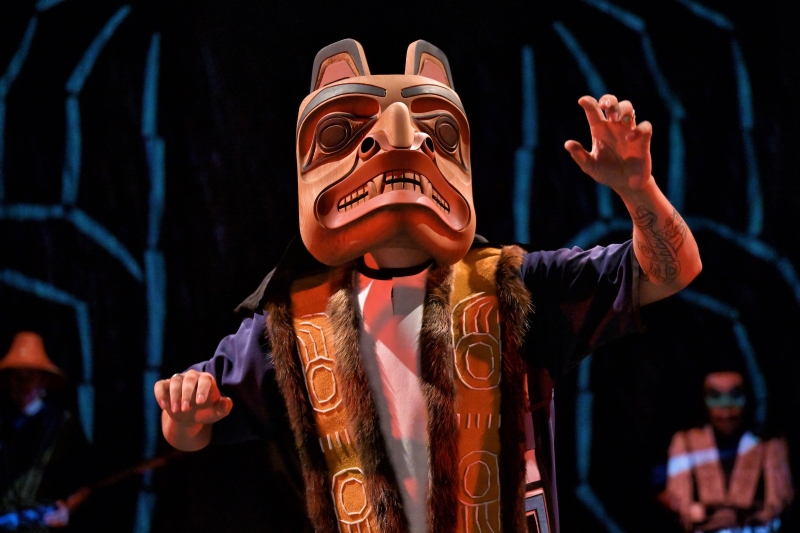
BWW: So the Potlatch Ban, which is something that a lot of Canadians sadly don't know about, was a decades-long ban on Indigenous cultural practices involving song, dance and storytelling. How does the show repudiate the violence and damage of that ban, and how are you countering that narrative with the narratives that you're using in the show?
GRENIER: I think that, for us, reflecting on what my mother undertook was more than just ensuring that song and dance was revitalized. I think that the impact that the Potlatch Ban had was destructive on many levels. It broke down a way to hold and sustain knowledge, and that knowledge was something that supported the health of the community and our ability to even function as a community. I think that the role that not just my mother, but that women hold in all of this, is that there had to be a way to not only care for community and practice, but to really find a place of hope for what could be one day.
For that reason, my mother dedicated her life to this practice. When we were creating RAVEN MOTHER, we wanted to do more than just take the work from a place of everything that she instilled with us in our training, but to really give our voice and do our part to elevate what she cultivated in her family and in her community.
The way that RAVEN MOTHER counters the impact of the Potlatch Ban is that it honors the legacy and the strength of our women. We put four years of work into this project and we offered our best not just through dance, but through the music that was composed, through the regalia that was created, through the visual design of the set and the projections. The intention is to really celebrate the beauty and depth of these practices, and to say it in a way that is both anchored in the tradition, while also reflecting the vibrancy of our practice today as contemporary practitioners.
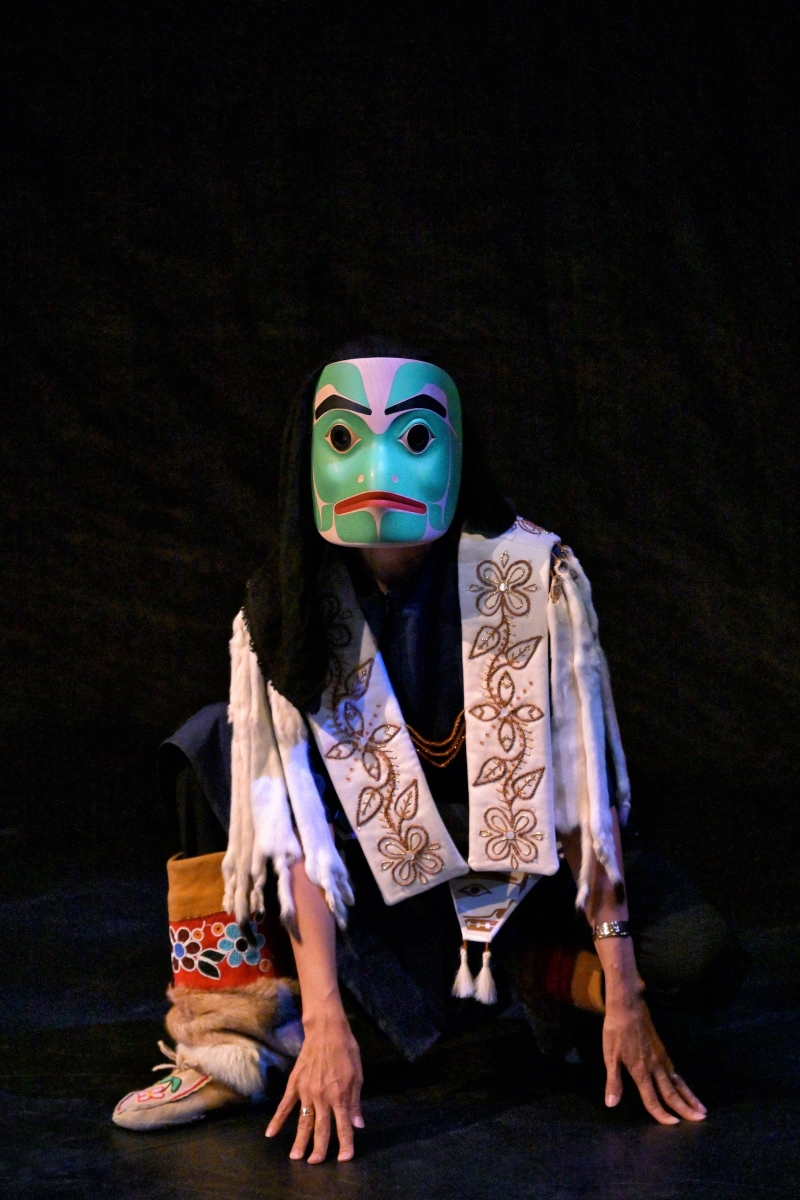
BWW: This seems to be a real family love story, with generations of your family among the performers as you further and add on to the family story. What is it like, dancing and creating together as a family?
GRENIER: We grew up in a practice that was focused on family. I think what really resonates, coming from that perspective, is that the practice itself is something that strengthens intergenerational ties. For my children, it was an opportunity for them to have those strong connections to their grandparents. It has the capacity to be informed by both the voices of our elders and our youth. The practice is very responsive to the story and needs of today. A very important story that we have today, especially something that's really surfaced since the pandemic, is the mental health and well-being of our young people. With RAVEN MOTHER, I felt that it's not just speaking to a story where, through the efforts of the generation before us, we have strengthened, but we also have our challenges that we face.
There's been even further displacement as well; in my grandmother's generation, for example, English was her second language. We've experienced so much more loss of language with the younger generations. And then, on top of that, I think that there's something that really gets seeded in our young people, where there's a struggle of confidence within their own voices as Indigenous people and their connection to home and to community as well. And so, while the practice offers an opportunity for us, it's also something that we really have to fight for. It's a diligent practice that we have to not become complacent with, and I think that that's reflected as well in the narrative that we're offering with RAVEN MOTHER.
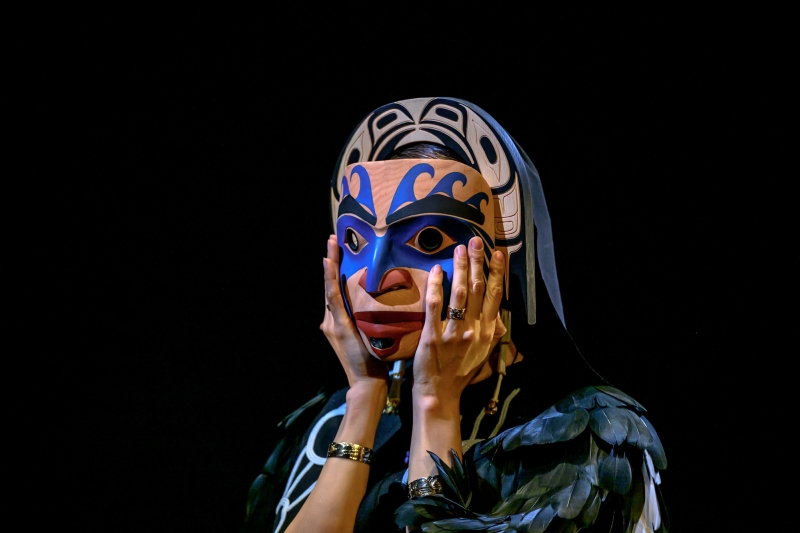
BWW: Can you tell us about the imagery and history of the raven cloak by Rebecca Baker-Grenier and of the raven transformation mask that are featured in the show?
GRENIER: We're working in a very contemporary context, but we're honoring a very long lineage of tradition. With the raven cloak, the research that was done was based on simply the knowledge that we once had a raven cloak, but it was not something that we now physically had. So, feather by feather, Rebecca created this beautiful raven cloak, and she also worked with the imagery and design of what we call three levels of home. We have our earthly home, our heavenly home, and our home beneath the waters. She drew from this worldview in the design work that she also incorporated into this cloak.
In doing so, we have this beautiful cloak that almost looks futuristic, but I think it's because it's created in a way that it becomes timeless. It's taking something so abstract, because it's A VERY OLD tradition, that it almost doesn't have a sense of time as to whether it is traditional or contemporary. And I think the same thing happened with the transformation mask. Often transformation masks will open to reveal an inner mask and maybe two inner masks, but the mask that we created for RAVEN MOTHER has five masks all together. There's the outer raven mask, and then it has four layers of masks within, intended to represent the intergenerational transfer of knowledge and the women who have held this. We even have one of the inner masks representing the youngest generation in our family who have not yet fully come into their place as practitioners, but they are the future of where this practice will take us.
BWW: You were saying that this show is blending history and tradition with something very contemporary and very alive in its design. I know that there are also going to be contemporary multimedia projections by Indigenous artist Andy Moro. How do those projections support the work?
GRENIER: As masked dancers, it is part of our dance form that we have always added different effects to sharing song and dance, such as smoke and trap doors. Whenever we create, all of the different aspects are created in response to one another. So Andy Moro was part of the creative process throughout, working with us as we created the dances. The way that we approach all aspects of the creative process is that they become the different layers to help support the narrative. to give something tangible to audiences so that they can get insight into the different aspects that we're conveying.
Very important to our culture on on the West Coast is the beautiful formline design that we have that represents our crests. And so that is also something that Andy Moro worked with. He didn't do the artwork for the crests. That was done by the artist David Boxley, who is a collaborator as well, and then my daughter, Raven Grenier, with another collaborator who did some of the form line as well. But Andy Moro was able to work with the artwork and then integrate that as well into the design work that he was doing.
BWW: Your daughter is also doing the original music and live vocals.
GRENIER: We have a combination of live singing and the recorded tracks. My daughter, Raven, was the main composer for the whole of the piece. She also worked in collaboration with Ted Hamilton, who's a composer that our family has worked with with a number of years. Raven, like Rebecca, really focused on archival materials to musically deconstruct our songs and then from there create in a way that I feel has really elevated her practice. And I think the beauty in that is just seeing from a very young perspective the possibilities that come from having that anchored research when composing and creating new work.
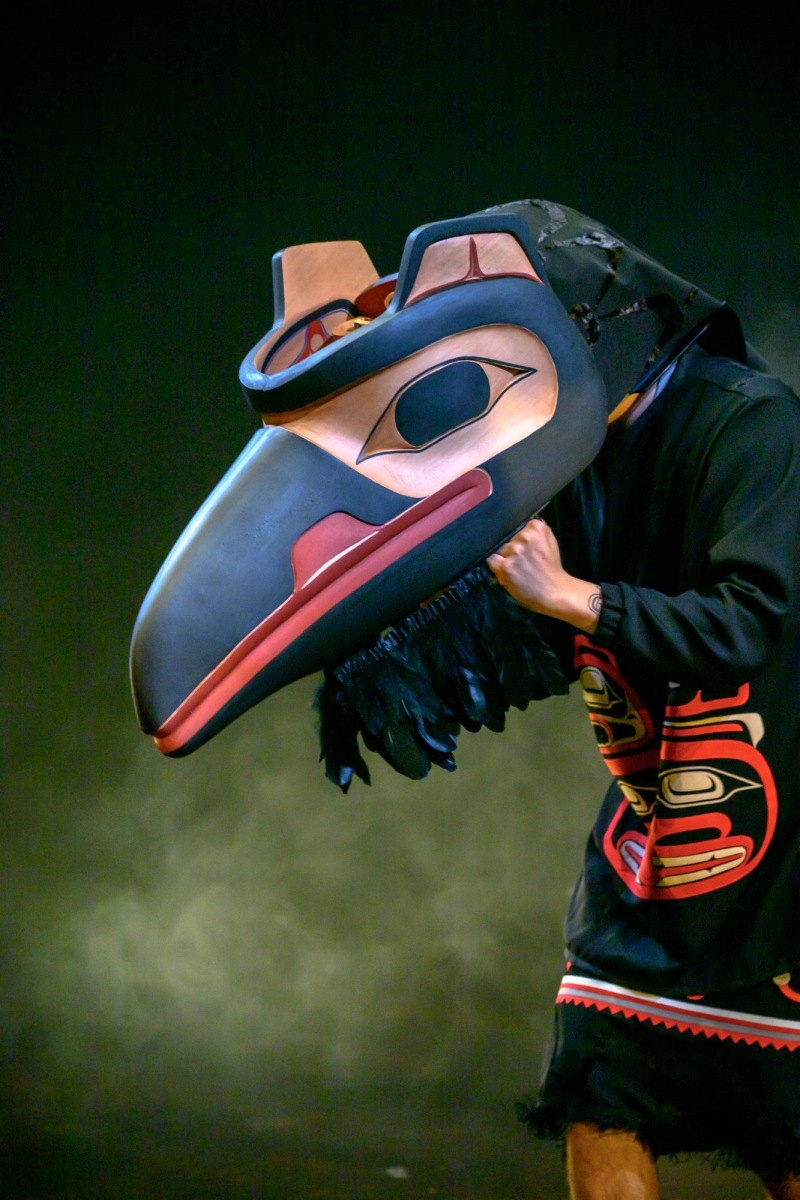
BWW: Thank goodness for archival materials! And then the art of the present becomes the archive of the future.
GRENIER: Yes.
BWW: You mentioned the West Coast, and I know that this is one stop in a nationwide tour. Where else are you going?
GRENIER: We premiered the work in Vancouver a few weeks ago. We're currently in Montreal. And then…we're going to go to the National Arts Center in Ottawa next week. Then, in between there and on our way to Toronto we'll be in Peterborough for one evening and then end our tour in Toronto.
BWW: So Toronto is the last stop.
GRENIER: Yes, yes, we're looking forward to that.
BWW: What has the reception been like so far?
GRENIER: It has gone well. It's always interesting to see because it's a very specific cultural sharing and I think there isn't always that awareness for audience members coming into it. But I think because it is such a multimedia piece and there are different things for people to respond to that it has felt very warm and very supportive the few nights we've started on this tour.
BWW: You're doing two different performances in Toronto on the 29th, the evening one and then one in the afternoon. How do the performances differ?
GRENIER: It's the same piece, it's just slightly modified for the younger audience that will be there in the afternoon. They're coming from schools and we're offering a bit of a conversation as well to clarify and give them a little bit more context about what they're seeing, and how it fits in with both historical and contemporary narratives.
BWW: In the end, what excites you most about this work?
GRENIER: What I would call the gift of this piece has been to see not only Raven and Rebecca in what they created, but as dancers in the piece. My son Nigel is also a dancer in the piece, and then I have two nieces that are at doing different locations, but in Toronto it'll be my niece Tobie. In creating and in offering something to their grandmother, there have been these beautiful moments that have emerged.
For example, my son has learned to do a speech in Cree. It's a beautiful speech that he does in honor of his grandmother. And then a powwow song was composed for her. Every time I hear it and I watch it, I know my mom's heart would be so affected by that. Then we had another opportunity with this piece that just worked out because we had very little recording of her, but we had an interview that was done. And so we were able to take elements of that interview and include it in the piece as well, and just to have her voice included, it's moments like these which I've been able to receive in creating the work.
BWW: It's wonderful when you can create a work of art that really connects generations together, and you can really see that through line from decade to decade. I hope that you have warm and open audiences in Toronto. I'm sure you will.
Cover photo of by Michael Slobodian
Comments

Videos

